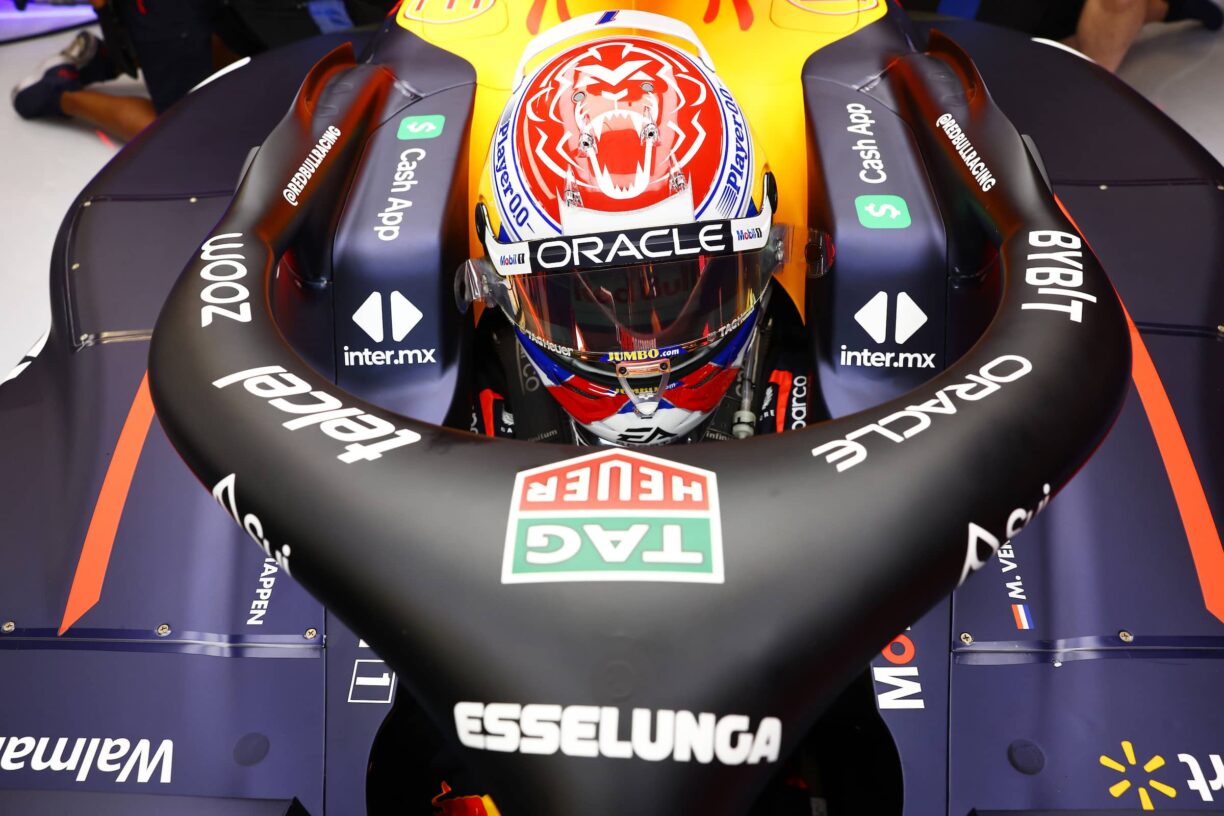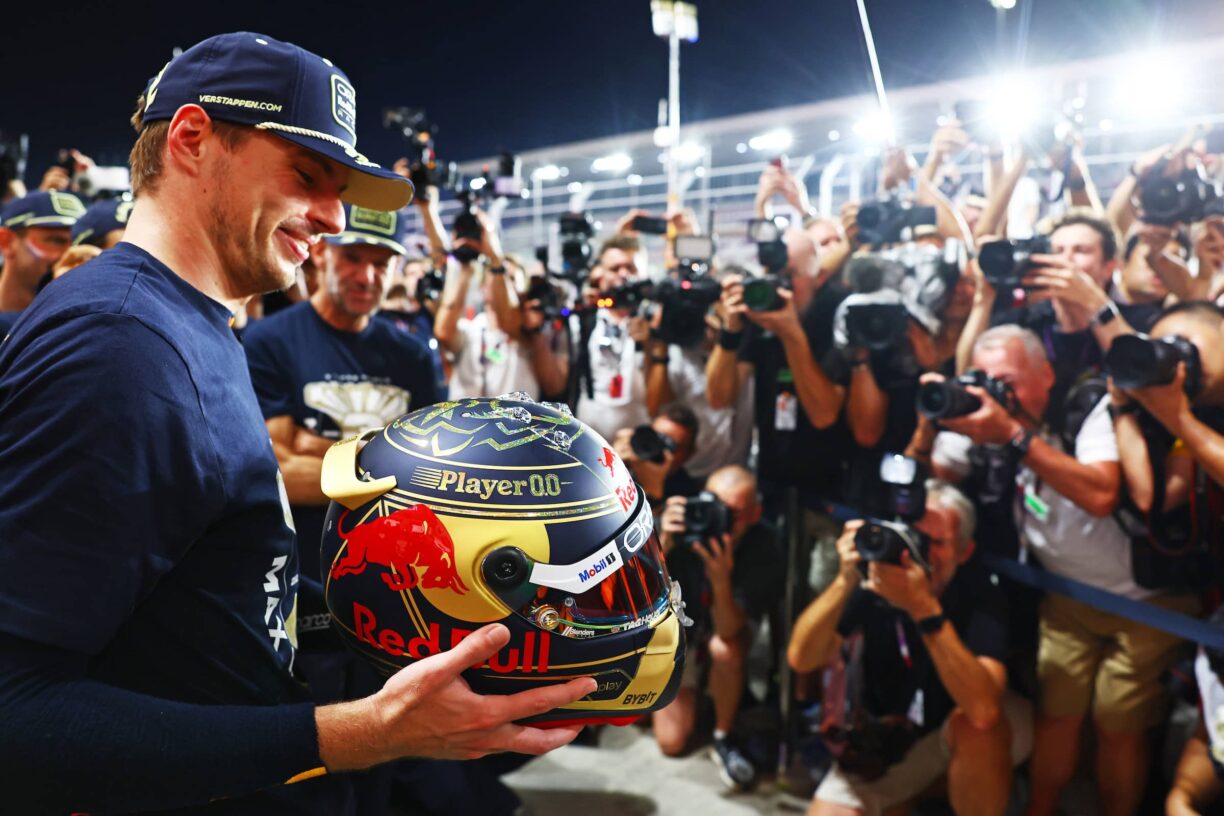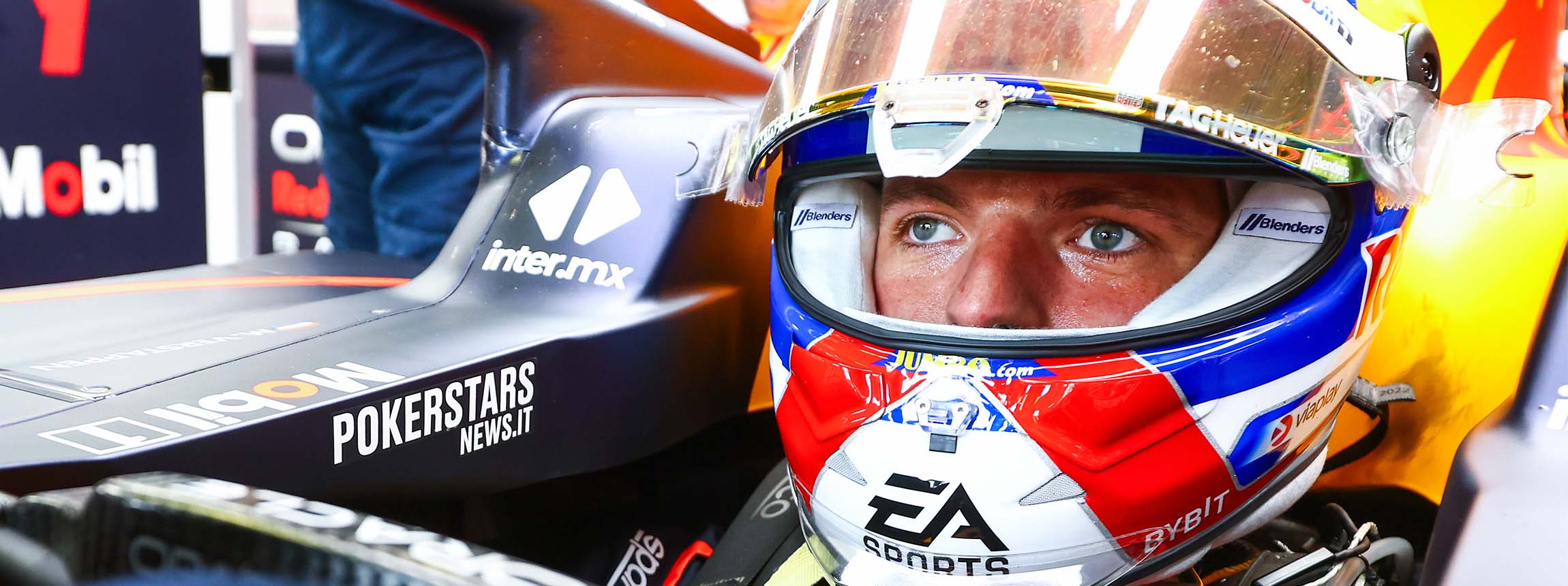After clinching his third straight Formula One World Championship in the Sprint race, Max Verstappen debuted a new helmet design on October 8, just ahead of the Qatar Grand Prix.
From the historical cloth caps to the state-of-the-art carbon-fibre masterpieces of today, F1 helmets have witnessed a relentless evolution. While their prime objective has been the safety of drivers, their surface has doubled up as a canvas for creative self-expression.

During the Qatar Grand Prix Sprint on October 7, while Oscar Piastri clinched the top spot, Max Verstappen, finishing second, accumulated the points required for his third consecutive Drivers’ Championship title.
In honour of this achievement, Verstappen unveiled a commemorative helmet design. Additionally, this accomplishment enabled him to tie with Michael Schumacher’s record of winning the F1 championship with six races yet to conclude in the season.
The helmet showcased a navy-blue base embellished with striking gold elements. The rear of the helmet features Verstappen’s emblematic ‘V’ logo in gold, succeeding his father’s ‘JV’.
Above this, three stars represent his trio of championship titles, with ‘World Champion 2023’ etched below. The familiar roaring lion, depicted in gold, adorns the helmet’s dome, and gold-trimmed V-lines at the front round out the championship-worthy design.
Verstappen’s recent helmets have been more than mere protective gear; they’ve been glimpses into his past, his inspirations, and his growth as a racer.

That’s what he wants to communicate to his fans and the broader motorsport community: “As a kid, you grow up, you have a dream, you want to become an F1 driver, you want to win. And now you’re winning titles. This is more of a message that if you believe in it, if you work hard for it, anything is possible in life.”
From the early days when Formula One drivers wore simple leather caps and goggles, helmets underwent significant development. The shift from cotton-resin helmets in the pre-1960s evolved into the safer fibreglass variants by the decade’s end, with 1968 introducing the groundbreaking Bell Star – the first full-face helmet with an integrated visor and a fire-retardant Nomex lining.
This paved the way for the prevalent carbon fibre constructions we see today. By the 1990s, helmets weren’t just safety gear; they became personalised canvases, allowing drivers to craft unique on-track identities with distinct designs, colours, and symbols.
F1 helmets often reflect drivers’ heritages, uniting national pride with personal identity. Sergio Perez’s helmets consistently honour his Mexican roots.
For his 250th Grand Prix in Singapore in 2023, a helmet shimmered with the metallic hues of the Mexican flag and boasted a ‘250 GP’ inscription.
Beyond national colours, Perez’s 2022 design for the Mexico City Grand Prix featured a Day of the Dead-inspired sugar skull and patterns echoing ancient Aztec art.
Similarly, Scuderia AlphaTauri’s Yuki Tsunoda pays tribute to his Japanese origins. Elements like the national flag, Japanese maple leaves, the Tachibana emblem, and the God of Wind, Shinatsuhiko, are regular features. Tsunoda once remarked on including Shinatsuhiko for its connection to ‘downforce’ in racing.
Tsunoda revealed: “Downforce is very important, and that relates to wind [..] I thought that it would be cool to add the God of Wind to the helmet so that I get more downforce!
It is mostly about having a little bit more luck.” His 2022 debut helmet for the Japanese Grand Prix stood out, blending cherry blossoms with a koi fish motif surrounding his number 22, set against a rising sun.
The helmet of Daniel Ricciardo, one of the most successful Australian Formula 1 drivers, prominently features the honey badger, an animal symbolising fearlessness and tenacity, mirroring his own resilience on the F1 circuit.
Over the years, playful tweaks to the design have captured Ricciardo’s unique charm, like the moustached, cigar-smoking honey badger for the 2018 US Grand Prix.
In his 2018 farewell race with Red Bull Racing, the design showed the creature in the team’s cap, holding a Red Bull can, topped with a ‘cheers’ sign. On rejoining the track with Scuderia AlphaTauri in 2023, his helmet proudly announced ‘I’m back.’
The now three-time World champion Max Verstappen embraced the allure of retro helmets in his own way. Ahead of his highly anticipated home race in Zandvoort in September 2022, Verstappen revealed a helmet design that pays tribute to his father, Jos, who raced the Formula One circuit from 1994 to 2003.
The homage is evident in the choice of colours and their arrangement: against a white backdrop, the helmet features a bright red dome and two red stripes forming an inverted ‘V’ at the front.
Deep blue accents complete the helmet, now echoing the Dutch flag palette, while the back displays an identical ‘JV’ logo in red and blue. Verstappen’s personal touch becomes apparent in the red dome, where white lines trace the contours of his signature roaring lion – a proud nod to his Dutch heritage.
In his reveal video, Max said: “The Dutch Grand Prix is coming up, and I thought this would be a great time to appreciate all the effort my dad’s made for me since I was a little kid to bring me to where I am today, winning the World Championship.”
Two years have gone by since the Zandvoort GP, and any F1 enthusiasts have noticed the significant departure from his previous retro helmet designs inspired by his father, Jos.
When questioned about the balance between honouring his father’s legacy and expressing his own style, Verstappen explained: “It’s the same design I grew up with.
When I began go-karting, I had the same helmet my father used to have. The only change I made was to swap the red and blue colors: everything that was red on his helmet became blue on mine, and vice versa.
I’ve always had this connection to his design, but now I wanted to have the same helmet as my father and run with it.”.
